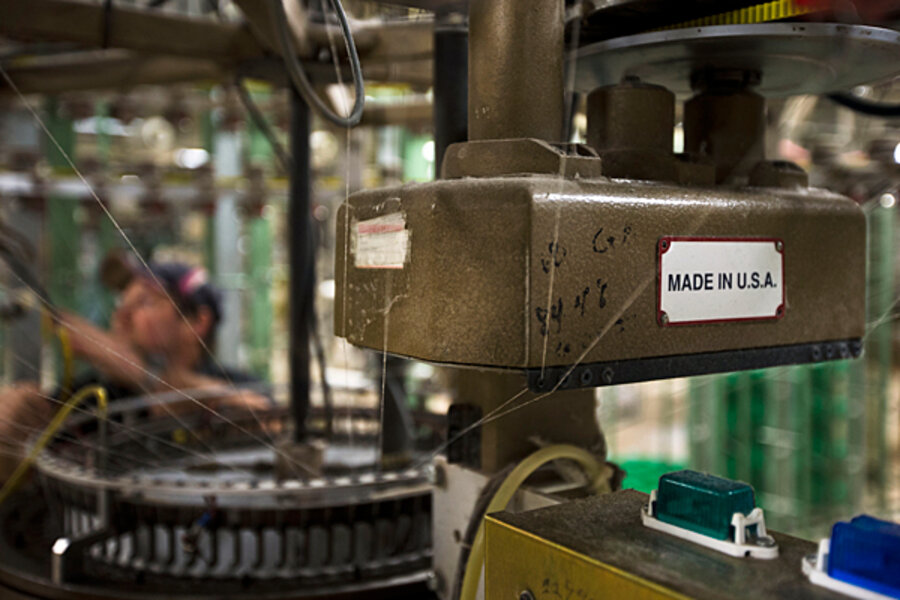Revised GDP: US economy actually grew in fourth quarter, but barely
It turns out America’s economic growth didn’t turn negative at the end of last year, after all.
A revised estimate of fourth-quarter gross domestic product, released Thursday, shows the US economy with a smidgen of positive growth: a 0.1 percent annualized rate, to be precise.
That’s a welcome upgrade, after an initial estimate last month showed a GDP decline of 0.1 percent.
“The only surprise in the upward revision … is that it wasn't bigger,” Nigel Gault, chief US economist at IHS Global Insight, wrote in an analysis of the government’s report.
That’s because the economy has been growing in general at something close to a 2 percent pace, driven by gains in consumer spending, business investment, and home building.
The weak fourth quarter stemmed from two factors that can be volatile: business inventories (down for the quarter) and federal spending on defense (also down by an unusually large amount).
Mr. Gault says the economy’s growth rate seems set to rebound to 2 percent in the first quarter, or a bit higher. A big question, however, is what Congress and President Obama will do about the impending sharp cuts in federal spending, known as the “sequester.”
Those cuts are scheduled to take effect on March 1, with the aim of bringing down federal deficits. They are also expected to dampen GDP growth, as less money gets spent to pay for everything from Navy ships to teacher's aides.
“We estimate the drag from the sequester at only 0.3 [percent]” for the first quarter, Gault writes. “But if the sequester continues through June, we estimate it would take 1.8 percentage points off” growth in the second quarter.
If that forecast is correct, it would pull growth down to a very weak level, below 1 percent. Forecasters who are more pessimistic say the sequester could even push America back into recession.
For the year, many economists expect the US economy to grow, with the pace picking up a bit later in the year, after a midyear hit from the sequester.
A recent survey by the National Association for Business Economics found the average forecast calling for a 2 percent gain in GDP for 2013, and 2.8 percent in 2014.
Some details from the fourth-quarter numbers released Thursday show encouraging patterns. Annualized growth for consumer spending was 2.1 percent, plus 9.7 percent for business investment and 17.5 percent for home building.






